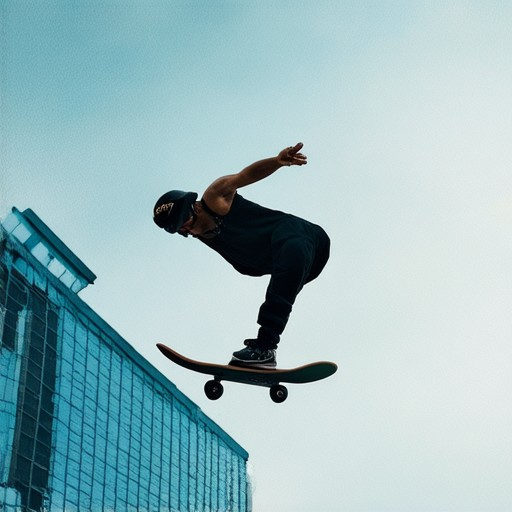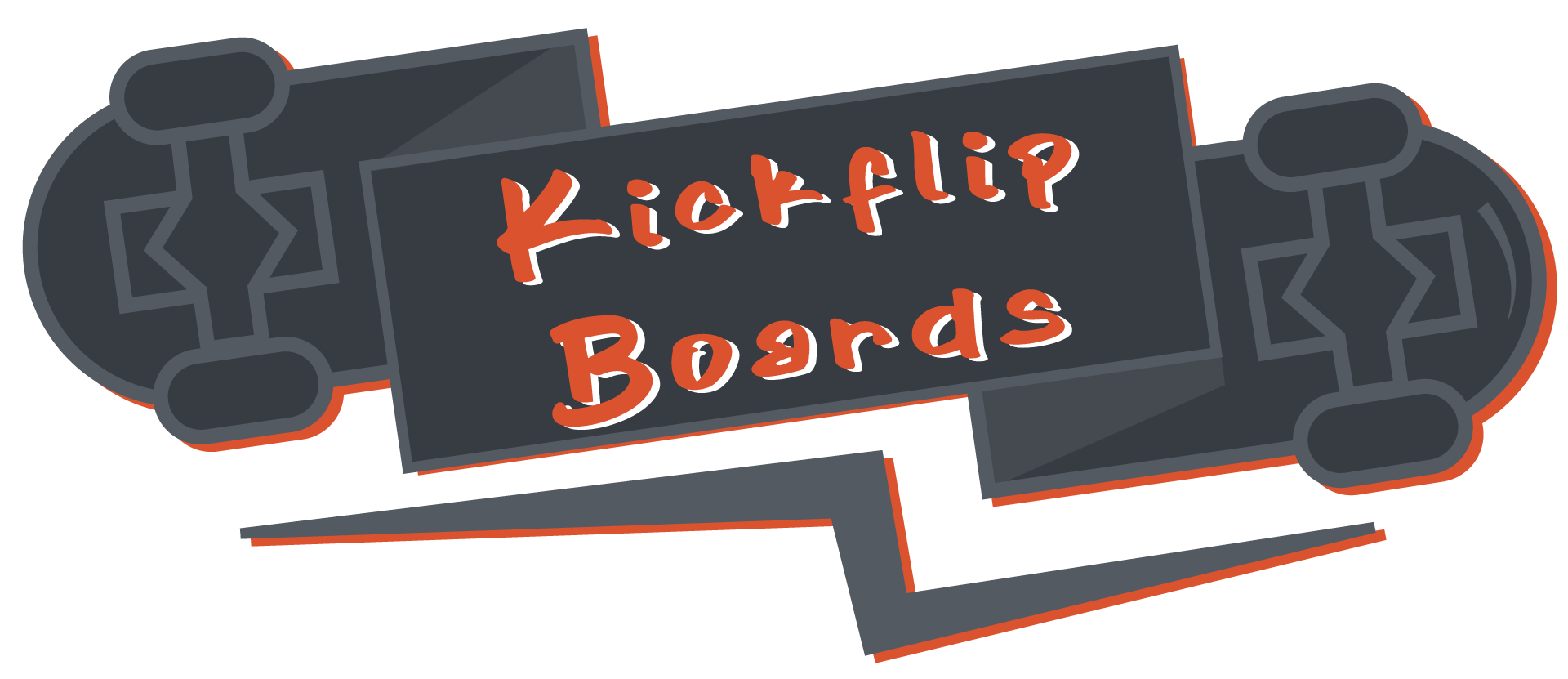Choosing the right skateboard size is one of the most critical decisions a rider can make, directly impacting both performance and comfort. Skateboard dimensions play a pivotal role in determining how well a board performs on various terrains, handles tricks, and supports riders of different skill levels. Whether you’re a casual cruiser or a serious park rider, understanding the key factors that influence skateboard dimensions can help you make an informed choice that enhances your experience. From the wheelbase to the deck size, each component works synergistically to create a board that suits your style and needs. Getting the dimensions right ensures not only better maneuverability but also improved weight distribution and durability, making it essential for both newcomers and seasoned skaters to prioritize this aspect of their setup.
Key Takeaways
- Deck Length and Width: Optimize stability and maneuverability with the right deck size and width, balancing performance and ease of use.
- Wheel Size: Choose larger wheels for a smoother, faster ride or smaller wheels for superior trick performance.
- Truck Size: Select trucks for optimal turning and stability, catering to your riding style and surface conditions.
- Bearings: Invest in high-quality bearings for enhanced speed and a smoother ride.
- Weight: Balance portability and durability by selecting a skateboard that suits your weight and usage needs.

Key Factors to Consider When Determining Skateboard Dimensions
Choosing the right skateboard dimensions involves evaluating several critical factors that collectively impact performance, comfort, and suitability for your riding style. Here’s a breakdown of the essential considerations:
- Type of Skateboard : Start by identifying the purpose of your skateboard. Whether it’s for commuting, tricks, downhill, or casual rides, each type (e.g., cruiser, longboard, penny board) has standard dimensions tailored to its design. Cruisers and longboards typically have larger decks for stability, while penny boards are compact for portability.
- Wheel Size : Wheel size significantly affects stability and maneuverability. Larger wheels (e.g., 80mm or 83mm) provide smoother rides on rough surfaces and increased speed, whereas smaller wheels (e.g., 51mm or 53mm) are lightweight and ideal for tricks and tight turns.
- Deck Size : Deck length and width are crucial. Longer decks (8.5″ – 9.25″) enhance speed and reach but can be less easy to control. Wider decks (≥8″) improve stability, making them better for sharp turns and carves. Balance these aspects based on your riding preference.
- Truck Setup : The configuration of your trucks (number and position) impacts weight distribution and handling. A looser setup enhances agility, while a tighter setup improves stability. Experiment to find the optimal balance for your riding style.
- Grip Tape Thickness : Thicker grip tape offers initial traction but may wear faster. Thinner tape provides lasting grip but requires more effort. Choose based on your riding frequency and personal preference.
- Weight Capacity : Ensure the skateboard supports your weight. Heavier riders may prefer sturdier boards with larger dimensions for added durability and strength.
- Riding Style and Terrain : Tailor your choice to your primary riding style. Street skating favors portability and agility, while downhill riding prioritizes speed and stability. Terrain also plays a role; smooth surfaces may benefit from larger wheels, while rougher terrains may require thicker tires and wider decks.
- Tail Shape : The tail shape affects trick execution and turning. A snubbed tail is excellent for ollies and grinds, while a kicktail provides greater control during carves. Match the tail shape to your preferred tricks and riding style.
By thoughtfully considering each of these factors, you can select a skateboard that perfectly suits your needs, ensuring a comfortable and enjoyable riding experience tailored to your preferences and local conditions.
What Are the Key Factors That Influence Skateboard Dimensions?
Here are the primary factors that affect skateboard dimensions:
- Rider Skill Level: Novice riders often prefer larger skateboards (around 8-9 inches in length) for better stability and ease of balancing. More experienced riders may opt for shorter boards (7-8 inches) to maneuver more easily.
- Riding Style: The type of tricks or moves you perform influences the board size. Longer boards are preferred for tricks like ollies and grinds due to their increased reach and stability.
- Material Quality: The construction of the skateboard, whether it’s fiberglass, epoxy, or wood, affects its overall weight and durability, which in turn influences the recommended size for different riders.
- Design Elements: Features like the nose width, tail shape, and wheelbase significantly impact how the skateboard feels and performs. A wider nose can improve stability, while a longer tail enhances control during turns.
- Balance and Weight Distribution: A skateboard’s dimensions must align with the rider’s weight distribution to ensure comfort and control. Heavier riders might prefer slightly larger boards for better support.
- Intended Use: The purpose of the skateboard, whether for casual cruising, vert skating, or downhill racing, plays a crucial role in determining the optimal size. For example, downhill racers often use smaller, lighter boards for speed.
For more detailed insights and recommendations, visit our skateboard sizing guide .

Why Do Skateboard Dimensions Matter?
Skateboard dimensions play a crucial role in determining performance, comfort, and suitability for various riding styles. Each component of the skateboard, from the deck size to the wheel diameter, contributes to its overall functionality and user experience.
- Deck Size : The size of the deck affects stability and maneuverability. A larger deck provides more space for foot movement, which is beneficial for tricks and extended rides. Common sizes range from 7.0″ to 9.25″, catering to different skill levels and preferences.
- Width : Deck width impacts stability and how the rider positions their feet. Wider decks (around 7.5″) are often preferred for better foot placement and balance, while narrower decks may suit more compact stances.
- Nose and Tail Shape : The shape of the nose and tail influences the board’s handling. A larger nose enhances hangtime during tricks, while a wider tail improves control for kickflips and grinds.
- Wheel Diameter : Smaller wheels (22mm-24mm) offer better grip on smooth surfaces and increase speed, ideal for street skating. Larger wheels (48mm-54mm) provide durability and stability for rougher terrains.
- Concavity : Deck concavity affects grip and responsiveness. More concave decks enhance edge control, making them suitable for technical maneuvers.
- Mounts and Trucks Placement : Proper positioning of mounts and trucks ensures stability and weight distribution. Too far forward can hinder control, while too far back may reduce pop.
- Weight Distribution : Balancing the board’s weight between the front and rear trucks affects ride quality and trick execution. Lighter boards are easier to carry but may lack strength, while heavier options offer more durability.
Choosing the right skateboard dimensions involves considering personal style, terrain, and skill level. Whether cruising the streets or tackling parks, the perfect setup enhances both performance and enjoyment.

How Skateboard Dimensions Affect Performance
Skateboard dimensions play a crucial role in determining performance, affecting aspects like stability, speed, and maneuverability. Each component of the skateboard—deck, trucks, wheels, and bearings—contributes to overall functionality, and understanding how they interact can help optimize your ride.
- Deck Length: The standard size is typically 7.5 inches to 8.25 inches. Longer decks (8.25″) offer more stability and are preferred for downhill racing and long-distance cruising due to increased foot space and better weight distribution. Shorter decks (7.5″) are more agile and easier to maneuver for street skating and technical tricks.
- Deck Width: Width varies between 19.5″ to 29.5″. Wider decks (24″-29.5″) provide greater stability and are ideal for downhill racing and high-speed maneuvers. Narrower decks (18″-22″) are lightweight and more responsive, making them better suited for vertical skating and tricks.
- Wheel Size: Wheels come in various sizes (48mm-54mm). Larger wheels (53mm-54mm) offer a smoother ride and cover more ground, enhancing speed and distance. Smaller wheels (48mm-49mm) are preferred for tricks as they allow for quicker turns and better air control.
- Truck Size: Trucks come in sizes ranging from 50mm to 60mm. Smaller trucks (50mm-55mm) are lighter and more responsive, perfect for technical moves and vert skating. Larger trucks (58mm-60mm) handle more weight and provide better stability, making them suitable for heavier riders or rough surfaces.
- Bearings: High-quality bearings reduce friction, allowing wheels to spin faster and smoother. This improves both speed and handling, particularly on uneven terrain or during high-speed maneuvers.
The optimal skateboard setup often requires trial and error, as the best configuration depends on the rider’s style, body type, and preferred terrain. Whether you’re a casual cruiser or a competitive racer, matching your equipment to your needs can significantly enhance performance.
What Are the Important Factors That Influence Skateboard Dimensions?
The dimensions of a skateboard are influenced by several key factors, each contributing to its performance, comfort, and suitability for different riding styles. Here’s a breakdown of the most critical aspects:
- Deck Size and Width
- Deck size refers to the length and width of the board, typically ranging from 7.5″ to 9.25″. A smaller deck is more maneuverable and easier to carry but may lack stability. Larger decks offer more foot space and stability, ideal for park or street skating.
- Width affects how the board feels underfoot. Wider boards (8.5″ and above) are better for bigger riders or those seeking increased stability, while narrower boards (7.5″-8″) are preferred for lighter riders or those favoring a snappier feel.
- Wheel Diameter and Hardness
- Wheel diameter impacts speed and stability. Larger wheels (51mm-54mm) roll faster and smoother over rough surfaces, making them great for longboards and cruisers. Smaller wheels (48mm-49mm) are standard for skateboards and offer better maneuverability.
- Wheel hardness matters too. Soft wheels absorb shocks better but wear out faster, while harder wheels last longer and provide more responsiveness.
- Truck Size and Spacing
- Trucks determine the board’s turning radius and stability. Larger trucks (50mm and above) handle bigger wheels well and provide more control. Smaller trucks (47mm-49mm) are lightweight and suited for quick turns.
- Truck spacing (distance between the trucks) affects stability. Closer spacing improves agility, while wider spacing enhances stability, particularly on uneven surfaces.
- Grip Tape Thickness
- Grip tape thickness varies between 0.35″ and 0.75″. Thicker tape offers more durability and grip but can feel heavier. Thinner tape is lighter and allows for more feedback, though it may wear out quicker.
- Overall Weight
- Skateboard weight ranges from 7 lbs to over 30 lbs. Lighter boards are easier to carry and maneuver but may lack durability. Heavier boards are more robust and stable but can be harder to transport.
These factors work together to create a skateboard tailored to individual needs, whether for casual cruising, technical tricks, or aggressive downhill racing. Each choice ultimately affects how the board performs and feels, making it essential to consider personal preferences and riding style when selecting the right dimensions.

Most Important Skateboard Dimensions to Consider
When selecting the perfect skateboard, several critical dimensions come into play that directly impact performance, comfort, and versatility. Here’s a breakdown of the key factors to consider:
- Deck Size (Length and Width): The standard size is 7.5 inches by 31.75 inches, offering a balance between stability and maneuverability. Larger decks (8.0″ x 32.25″) are better for park and street skating due to increased pop and stability, while smaller sizes (6.5″ x 27″) suit younger riders or BMX-style riding.
- Wheel Diameter: Wheels vary in size from 51mm to 53mm. Larger wheels (52mm+) roll smoother and cover more ground, ideal for long-distance or cruising. Smaller wheels (50mm) are faster and better suited for vert and downhill racing.
- Truck Size: Trucks come in sizes ranging from 50mm to 60mm. Larger trucks (55mm+) offer more stability and are better for heavier riders or carving. Smaller trucks (48mm) are lightweight and responsive, great for technical tricks and tight turns.
- Bearing Quality: High-quality bearings reduce friction and improve speed. ABEC-7 bearings are among the highest rated, providing smoother rides and extended durability.
- Weight Capacity: Ensure the skateboard can support your weight. Most boards handle up to 200 lbs, but check the specifications for heavier riders.
- Material Quality: Durable materials like seven-layer fiberglass or epoxy resin ensure longevity. Higher quality construction improves strength and resistance to wear and tear.
By evaluating these dimensions, you can choose a skateboard that aligns with your riding style and skill level. Whether you’re cruising the streets or tackling challenging courses, the right fit ensures a more enjoyable and safe experience.
Kickflip Boards offers a wide range of options to suit every rider, from beginner to advanced. Explore our collection today and find your perfect match: Kickflip Boards .




0 Comments